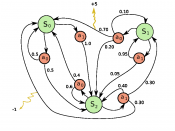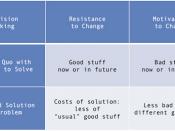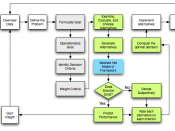Mental ProcessUniversity of PhoenixInnovation, Design, and Creativity for a Competitive AdvantageOI / 461Mental ProcessDecision-making in organizations can be the point in time where a company can make the greatest mistake or generate the most profitable idea. The importance of placing emphasis in how managers make decisions is paramount because of the negative or positive impact each decision may have on the organization. Each employee and each manager have similar and differentiating creative intelligences and mental models based on one's upbringing, education, and professional experience. Disagreements, misunderstandings, confusion, and arguments can all be derivatives of the simple fact that ever person is different in the way he or she views the world and thus, how he or she makes decisions in the work place. In situations requiring careful judgment, every employee is influenced by his or her own biases to some extent (BNET, 2008). Therefore, it is imperative that companies carefully consider the influence that the four styles of creative intelligence and mental models/mind sets may have on their decision-making process. In this paper, I will compare and contrast the four styles of creative intelligence, their influence on organizational decision making, and how the five forces influence mental models/mind sets.
The four styles of Creative Intelligence are, intuitive, innovative, imaginative, and inspirational. The intuitive style focuses on results and relies on past experience to guide actions (Rowe [R], 2004). A manager who is intuitive, for example, can be a hard-working, competitive, charismatic, and focusing on action and results; in other words, a great facilitator and convincing individual. This is the type of manager that is concerned with profits, company growth, and employee productivity. The style has a major influence on the organization as decisions are largely made with a direct or indirect objective to achieve desired results brought about by...



Great!!!!!!!
You did real good job on describing mental process. Great job!
3 out of 3 people found this comment useful.